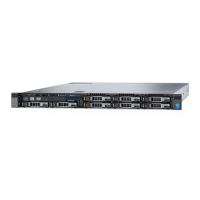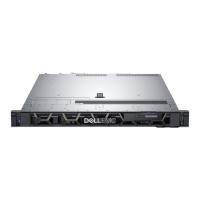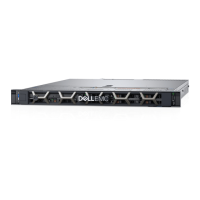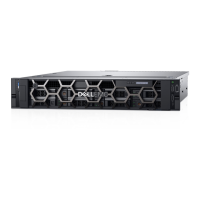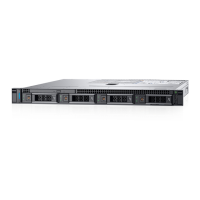Item Indicator, Button, or Connector Icon Description
Press to toggle the system ID on and o. If the system stops
responding during POST, press and hold the system ID button for
more than ve seconds to enter BIOS progress mode.
To reset the iDRAC (if not disabled in F2 iDRAC setup) press and
hold the button for more than 15 seconds.
4 USB connector (2) Allows you to insert USB devices to the system. The ports are USB
2.0-compliant.
5 Optical drive (optional) One optional SATA DVD-ROM drive or DVD+/-RW drive.
NOTE: DVD devices are data only.
6 vFlash media card slot Allows you to insert a vFlash media card.
7 LCD menu buttons Allows you to navigate the control panel LCD menu.
8 LCD panel Displays system ID, status information, and system error messages.
The LCD lights blue during normal system operation. The LCD lights
amber when the system needs attention, and the LCD panel
displays an error code followed by descriptive text.
NOTE: If the system is connected to AC power and an
error is detected, the LCD lights amber regardless of
whether the system is turned on or o.
9 Information tag A slide-out label panel, which allows you to record system
information, such as Service Tag, NIC, MAC address, and so on as
per your need.
10 Video connector Allows you to connect a VGA display to the system.
11 Hard drives (8) Up to eight 2.5 inch hot-swappable hard drives.
Up to four 2.5 hot-swappable hard drives and up to two 2.5 inch
Dell PowerEdge Express Flash devices (PCIe SSDs).
Figure 2. Front-panel features and indicators—10 hard drive system
Item
Indicator, Button, or Connector Icon Description
1 Diagnostic indicators The diagnostic indicators light up to display error status.
2 System health indicator The system health indicator blinks amber when a system fault is
detected.
8 About your system

